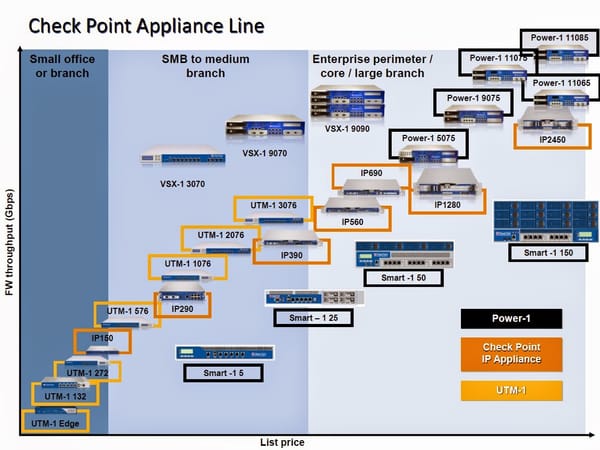APT28 Deploys First AI-Powered Malware: LameHug Uses LLM to Autonomously Guide Cyber Operations

Executive Summary
In a groundbreaking development that signals a new era in cyber warfare, Ukraine's Computer Emergency Response Team (CERT-UA) has identified the first publicly documented malware that leverages artificial intelligence to autonomously guide cyberattacks. The malware, dubbed "LameHug," has been attributed to Russia's APT28 group and represents a significant evolution in threat actor capabilities, utilizing large language models (LLMs) to dynamically generate system commands for data theft operations.

The Dawn of AI-Powered Malware
LameHug is the first malware publicly documented to include LLM support to carry out the attacker's tasks, marking a paradigm shift in how cybercriminals can leverage artificial intelligence for malicious purposes. Ukraine links it to the Russia-nexus APT28 group, a sophisticated threat actor also known as Sofacy, Strontium, and Fancy Bear, which has strong ties to the Kremlin and has been active in various high-profile cyberattacks.
The malware's discovery came after CERT-UA received reports on July 10, 2025, about suspicious emails sent from compromised accounts impersonating ministry officials. These emails targeted executive government authorities and contained ZIP archives that delivered the LameHug payload.
Technical Architecture and Innovation
LAMEHUG is a Python-based malware that leverages the LLM Qwen 2.5-Coder-32B-Instruct via the huggingface[.]co API to generate system commands from predefined text descriptions. The malware's architecture represents a sophisticated fusion of traditional malware techniques with cutting-edge AI capabilities.

Key Technical Components:
Programming Language: The malware is written in Python and relies on the Hugging Face API to interact with the Qwen 2.5-Coder-32B-Instruct LLM
AI Model: Qwen 2.5-Coder-32B-Instruct is a large open-source language model developed by Alibaba's Qwen team, specifically optimized for coding tasks
API Integration: LAMEHUG leverages Qwen2.5-Coder-32B-Instruct, a large language model developed by Alibaba Cloud that's specifically fine-tuned for coding tasks, such as generation, reasoning, and fixing
Command Generation: which can generate commands according to the given prompts
Operational Capabilities
The LameHug malware demonstrates sophisticated data collection capabilities that go beyond traditional static malware approaches. It collects system information, such as hardware, processes, services, and network connections. What sets this malware apart is its dynamic approach to command generation.
The malicious software dynamically generates instructions for stealing data through specific prompts, allowing it to adapt its behavior based on the specific system it has compromised. This adaptive capability represents a significant advancement over traditional malware that relies on pre-programmed command sequences.
The New Detection Paradigm
The emergence of LLM-powered malware creates entirely new detection challenges for cybersecurity professionals. An IBM X-Force OSINT advisory noted that the use of LLMs to generate the execution commands is unique, highlighting the unprecedented nature of this threat.
Novel Indicators of Compromise (IOCs):
- API Key Fingerprints: LLM API keys now become potential indicators of compromise, creating a new category of digital forensic evidence
- API Traffic Patterns: Network traffic to AI service providers like Hugging Face may indicate malicious activity
- Prompt Patterns: The specific prompts used to generate commands could serve as behavioral signatures
- Model Version Dependencies: References to specific LLM versions and capabilities
Implications for Cybersecurity
The deployment of LameHug represents several critical implications for the cybersecurity landscape:
Autonomous Adaptation
From a technical perspective, it could usher in a new attack paradigm where threat actors can adapt their tactics during active operations, making traditional signature-based detection methods less effective.
Democratization of Advanced Capabilities
The use of publicly available AI models means that sophisticated attack capabilities that were once limited to nation-state actors may become accessible to lower-tier threat actors.
Scale and Automation
AI-powered malware can potentially operate with minimal human oversight, allowing threat actors to scale their operations significantly.
Attribution and Geopolitical Context
The attribution of LameHug to APT28 is particularly significant given the group's history and capabilities. APT28 has been linked to numerous high-profile cyberattacks and is believed to operate as part of Russia's intelligence apparatus. The timing of this development, amid ongoing geopolitical tensions, suggests that nation-state actors are actively investing in AI-powered cyber capabilities.
Defensive Strategies and Recommendations
Organizations must adapt their security strategies to address this new threat paradigm:
Technical Countermeasures:
- API Traffic Monitoring: Implement monitoring for unusual API calls to AI service providers
- Behavioral Analysis: Develop detection rules that identify dynamically generated command patterns
- Network Segmentation: Limit outbound connections to AI service providers where not required
- Prompt Injection Detection: Develop capabilities to identify potential prompt injection attempts
Organizational Preparedness:
- Threat Intelligence: Integrate AI-powered threat indicators into existing threat intelligence frameworks
- Incident Response: Update incident response procedures to account for AI-powered malware
- Training: Educate security teams on AI-powered threat detection and analysis
Future Threat Landscape
The emergence of LameHug likely represents just the beginning of AI-powered malware evolution. Security professionals should prepare for:
- Increased Sophistication: More advanced AI models being integrated into malware
- Multi-Modal Threats: Malware that combines text, image, and code generation capabilities
- Evasion Techniques: AI-powered methods to bypass traditional security controls
- Adversarial AI: Malware designed to specifically target AI-powered security systems
Conclusion
The discovery of LameHug marks a watershed moment in cybersecurity history. As the first publicly documented AI-powered malware, it demonstrates how threat actors are successfully weaponizing artificial intelligence for malicious purposes. The malware's ability to dynamically generate commands using LLMs represents a fundamental shift in how cyberattacks can be conducted and detected.
Security professionals must rapidly adapt their detection capabilities, threat intelligence frameworks, and incident response procedures to address this emerging threat class. The creation of new indicator categories, such as LLM API keys and prompt patterns, will become essential components of modern cybersecurity programs.
As AI continues to evolve and become more accessible, the cybersecurity community must remain vigilant for additional AI-powered threats while developing corresponding defensive capabilities. The LameHug malware serves as a stark reminder that the future of cybersecurity will be increasingly defined by the race between AI-powered attacks and AI-powered defenses.
This analysis is based on reports from Ukraine's CERT-UA and ongoing cybersecurity research. Organizations should monitor for additional indicators of compromise and update their security postures accordingly.







